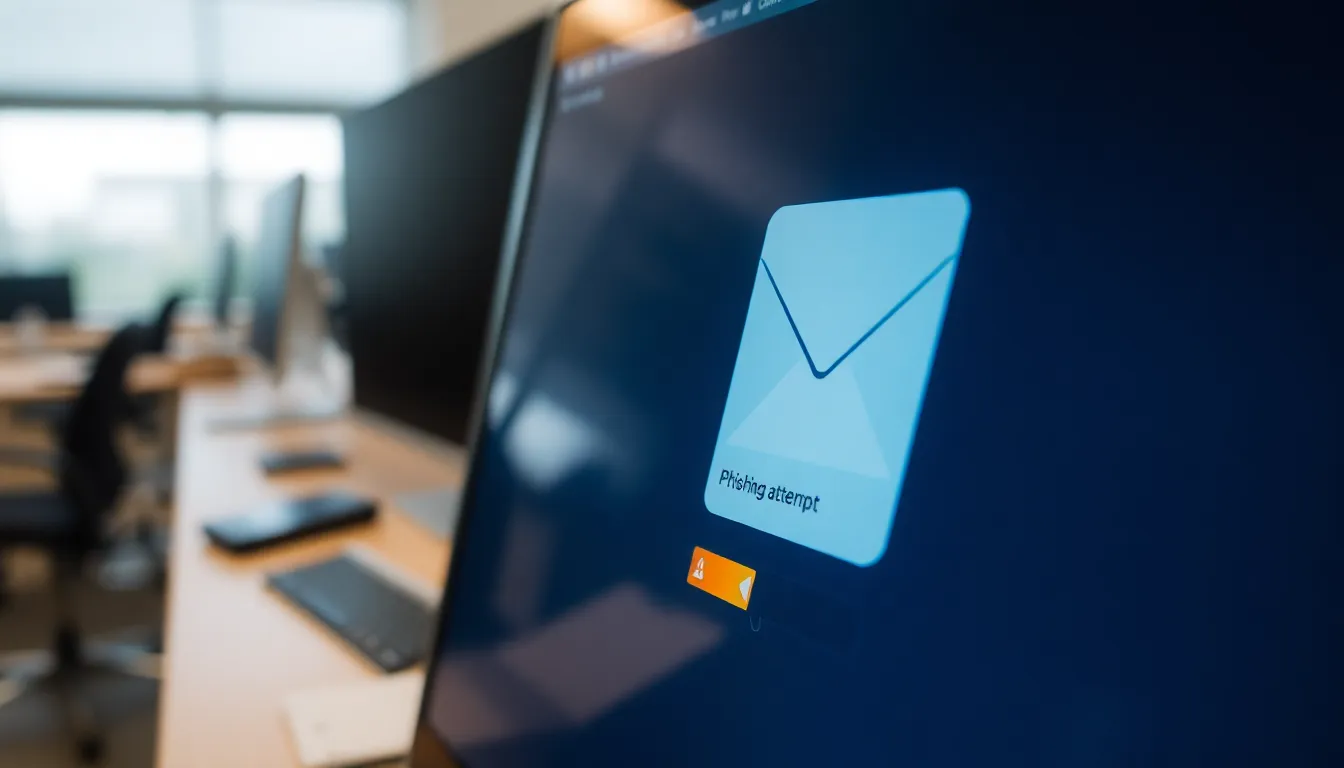In a world where digital tricksters lurk around every corner, anti-phishing is the superhero we never knew we needed. Imagine receiving an email that looks as legitimate as your grandma’s famous cookie recipe, only to discover it’s a cleverly disguised trap. Phishing scams have evolved into a high-stakes game of cat and mouse, and without the right defenses, anyone can fall victim.
Table of Contents
ToggleUnderstanding Anti-Phishing
Anti-phishing represents a vital defense against deceptive online schemes. Combating these scams helps individuals and organizations protect sensitive information.
What Is Phishing?
Phishing refers to fraudulent attempts to obtain personal data through deceptive emails, messages, or websites. Scammers often impersonate trusted entities, creating a false sense of security. These scams may request sensitive information such as passwords, credit card details, or social security numbers. Notably, techniques like spoofing and social engineering enhance the effectiveness of phishing tactics. In 2023, 1 in 4 individuals reported receiving phishing emails, highlighting the widespread nature of this threat.
The Importance of Anti-Phishing Measures
Implementing anti-phishing measures significantly reduces vulnerability to online scams. Organizations that adopt these strategies safeguard sensitive data from unauthorized access. Effective measures include employee training on recognizing phishing attempts and using email filters to block malicious messages. Regular software updates to security systems also strengthen defenses. According to the Anti-Phishing Working Group, reported phishing attacks reached over 1.6 million in 2022, underscoring the necessity of proactive anti-phishing practices.
Types of Anti-Phishing Techniques

Various techniques exist to combat phishing threats. Effective anti-phishing strategies protect sensitive information and enhance online safety.
Email Filtering
Email filtering plays a vital role in anti-phishing tactics. This technique automatically scans incoming messages and identifies potential threats based on specified criteria. Filters block or quarantine suspicious emails before they reach users’ inboxes. With 1 in 4 individuals reporting phishing emails in 2023, employing robust email filtering is crucial. Organizations that utilize advanced filtering technologies significantly decrease their chances of being targeted.
Domain Spoofing Protection
Domain spoofing protection safeguards users from fraudulent emails appearing to come from legitimate sources. This technique verifies the authenticity of sender domains using protocols like DMARC, DKIM, and SPF. Implementing these protocols enhances email security and reduces the risk of falling victim to scams. With many phishing attempts impersonating trusted entities, domain spoofing prevention becomes essential. Companies prioritizing this protection see improved trust and safety in their communications.
Best Practices for Anti-Phishing
Anti-phishing practices are essential for safeguarding personal data and enhancing online security. By adopting a proactive approach, individuals and organizations can significantly reduce the risk of falling victim to phishing attacks.
User Education and Awareness
User education is critical for combating phishing. Regular training sessions help employees recognize suspicious emails and fraudulent links. Identifying signs of phishing improves overall vigilance. Sharing recent phishing trends fosters group awareness. Engaging users through practical simulations can further enhance their skills. According to statistics, 1 in 4 individuals reported phishing emails in 2023, highlighting the urgent necessity of education.
Implementing Multi-Factor Authentication
Multi-factor authentication (MFA) adds an extra layer of security. By requiring users to provide multiple forms of verification, MFA reduces the likelihood of unauthorized access. This approach is particularly effective for sensitive accounts, such as banking and email. Implementing MFA significantly limits the impact of compromised credentials. Transitioning to MFA shows commitment to improving security protocols. Organizations that prioritize MFA demonstrate a proactive stance against phishing threats.
Future Trends in Anti-Phishing
The landscape of anti-phishing continues evolving with the emergence of new technologies and threats. Staying ahead in this field is essential for enhancing security.
AI and Machine Learning Solutions
Artificial intelligence and machine learning play pivotal roles in shaping anti-phishing strategies. These technologies analyze patterns in data, identifying suspicious behavior more efficiently than traditional methods. By training algorithms on large datasets, they can recognize known phishing techniques and adapt to new ones. Companies employing AI-driven solutions frequently see improved detection rates, significantly reducing the number of phishing emails that reach users. In 2023, organizations leveraging machine learning reported a 45% increase in successfully blocked phishing attempts. This trend reinforces the importance of integrating advanced technologies into security frameworks.
Evolving Threats and Solutions
Phishing tactics continue to diversify, making awareness and adaptability crucial. Attackers increasingly employ socially engineered tactics, focusing on human psychology to bypass security measures. This evolution necessitates ongoing vigilance among users and organizations. Security solutions must also adapt by incorporating real-time threat intelligence, enabling quicker responses to emerging scams. The rise of deepfake technology showcases the sophisticated nature of future threats, prompting businesses to revise their defenses. Implementing continuous training and up-to-date security measures proves essential for maintaining effective anti-phishing practices. With over 1.6 million phishing attacks reported in 2022, proactive approaches are vital to combat these evolving challenges.
Anti-phishing measures are essential for safeguarding personal and organizational data in today’s digital landscape. With the rise in sophisticated phishing attacks it’s crucial to stay ahead of potential threats. Implementing robust training programs and utilizing advanced technologies can significantly enhance security.
Organizations that embrace a proactive approach not only protect their sensitive information but also foster a culture of vigilance among employees. As phishing tactics continue to evolve staying informed and adaptable will be key to maintaining effective defenses. By prioritizing anti-phishing strategies companies can build trust and resilience against these persistent threats.



